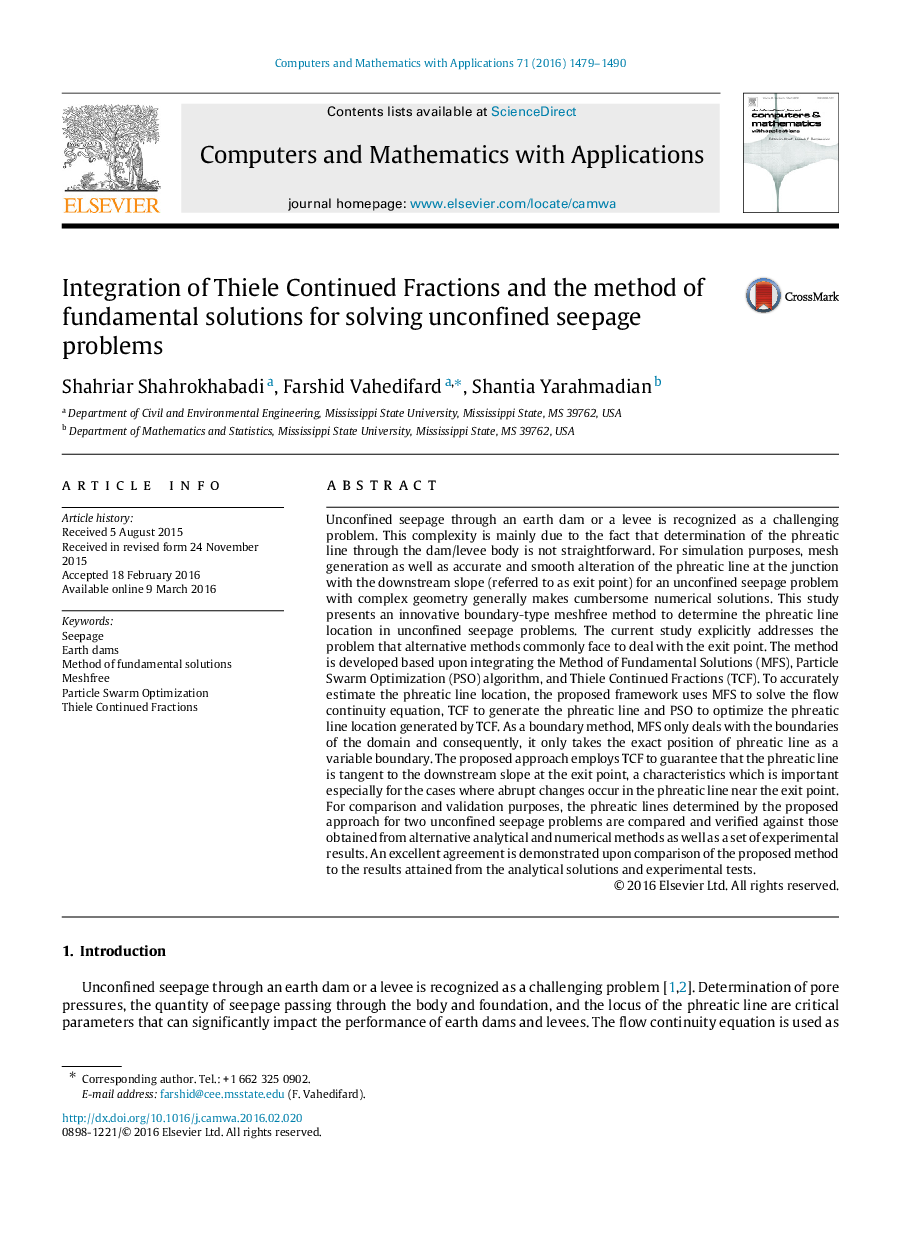| Article ID | Journal | Published Year | Pages | File Type |
|---|---|---|---|---|
| 471335 | Computers & Mathematics with Applications | 2016 | 12 Pages |
Unconfined seepage through an earth dam or a levee is recognized as a challenging problem. This complexity is mainly due to the fact that determination of the phreatic line through the dam/levee body is not straightforward. For simulation purposes, mesh generation as well as accurate and smooth alteration of the phreatic line at the junction with the downstream slope (referred to as exit point) for an unconfined seepage problem with complex geometry generally makes cumbersome numerical solutions. This study presents an innovative boundary-type meshfree method to determine the phreatic line location in unconfined seepage problems. The current study explicitly addresses the problem that alternative methods commonly face to deal with the exit point. The method is developed based upon integrating the Method of Fundamental Solutions (MFS), Particle Swarm Optimization (PSO) algorithm, and Thiele Continued Fractions (TCF). To accurately estimate the phreatic line location, the proposed framework uses MFS to solve the flow continuity equation, TCF to generate the phreatic line and PSO to optimize the phreatic line location generated by TCF. As a boundary method, MFS only deals with the boundaries of the domain and consequently, it only takes the exact position of phreatic line as a variable boundary. The proposed approach employs TCF to guarantee that the phreatic line is tangent to the downstream slope at the exit point, a characteristics which is important especially for the cases where abrupt changes occur in the phreatic line near the exit point. For comparison and validation purposes, the phreatic lines determined by the proposed approach for two unconfined seepage problems are compared and verified against those obtained from alternative analytical and numerical methods as well as a set of experimental results. An excellent agreement is demonstrated upon comparison of the proposed method to the results attained from the analytical solutions and experimental tests.
